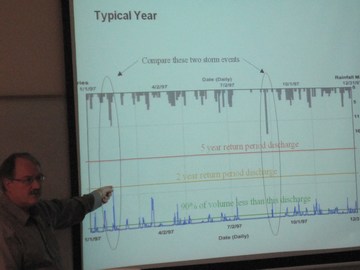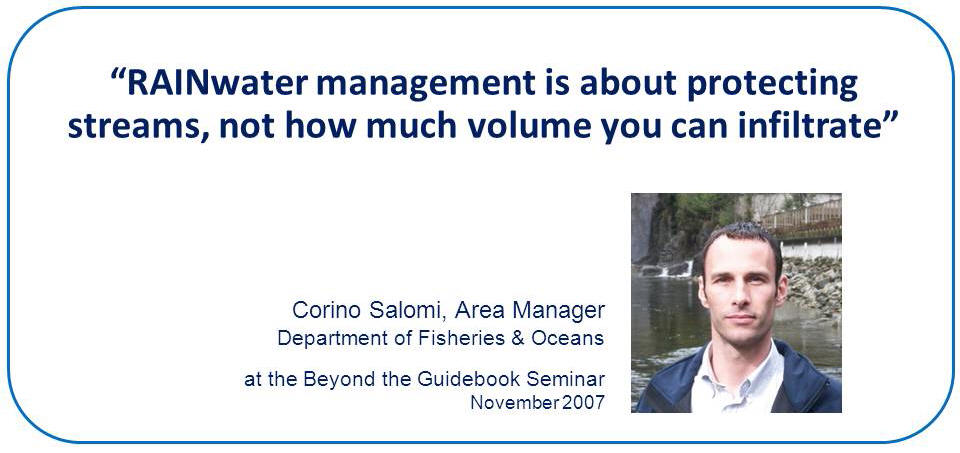British Columbia Moves Beyond 90% Rainfall Capture Target Proposed by United States EPA
Next Generation Rainfall Capture
Washington DC is a test case for an ambitious effort by the United States Environmental Protection Agency (EPA). The proposed permit for the District of Columbia storm-sewer system would require developers to capture 90 percent of the water that falls on a property during a rainstorm.
To learn more, click on United States EPA Proposes “Next Generation” Rainwater/Stormwater Controls in Clean Water Permit for Washington D.C
Learning from the British Columbia Experience?
“I have to think that the 90 percent number was influenced by our work in British Columbia over the years,” observes Patrick Condon of the University of British Columbia. Going back to the late 1990s, one of his best-known sound-bites has been  “capture the first inch of rainfall”.
“capture the first inch of rainfall”.
To learn about Patrick Condon’s latest book, click on Seven Rules for Sustainable Communities; Design Strategies for a Post Carbon World.
Department of Fisheries & Oceans Perspective
“While we need to have volume reduction targets, at the end of the day it is how effectively we apply the suite of available rainwater management tools that will ultimately determine whether we will succeed in protecting stream health at a watershed scale in British Columbia,” notes Corino Salomi of the Department of Fisheries & Oceans (DFO).
Response of a Watershed to Rainfall
“We have already examined and stepped beyond the 90% rainfall capture target proposed by the US EPA,” states Jim Dumont, Engineering Applications Authority for the British Columbia Inter-Governmental Partnership that developed and maintains the  Water Balance Model for Canada.
Water Balance Model for Canada.
“While that target may achieve a reduction in the potential pollutant load to a stream by 90%, it may not achieve any other benefit. It would be relatively easy to achieve the 90% capture target without altering the large runoff events from future developments.”
“Additional benefits can be achieved if we follow the progression of scientific learning to the next logical step.”
Targets Can Accomplish Multiple Objectives
“This is why we have sought to implement watershed targets for flow exceedance that would accomplish the most benefit for the stream. By achieving the exceedance objectives we will accomplish three objectives:
- first to provide enhanced base flows in the streams;
- second, to bring unnatural erosion under control; and
- finally, we can achieve a large degree of treatment for any of the discharges to a stream.
In this way, we achieve not only the single objective for water quality, we also address two additional issues that are critical to the stream and its health.”
Looking Ahead
“As we move forward with implementing the watershed objectives concerning flow exceedance, we can very easily add water quality objectives without greatly impacting our approach. We believe that the water quality criteria will be easier to achieve if the exceedance objectives are met,” concludes Jim Dumont.
To Learn More:
To download a copy of the graphic shown in the photo below, click on ‘Typical Year’ illustrates variable response of watershed to rainfall. To view a 3-minute video clip on YouTube that features Jim Dumont explaining the hydrology behind the graphic to students at the University of the Fraser Valley, click here.
To download a copy of a guidance document released by the Inter-Governmental Partnership at the 2008 Water Balance Model Partners Forum, click on Establish Watershed-Specific Runoff Capture Performance Targets.
The methodology embedded in the Water Balance Model enables a watershed target to be established. It also enables the user to assess how to meet the watershed target at the site scale.



